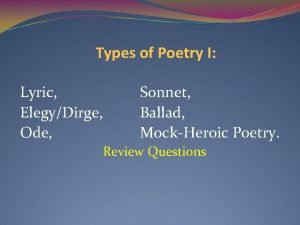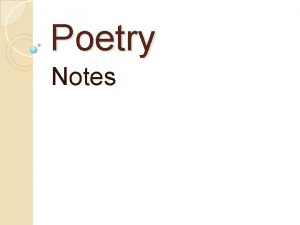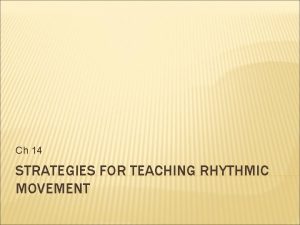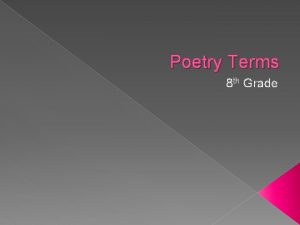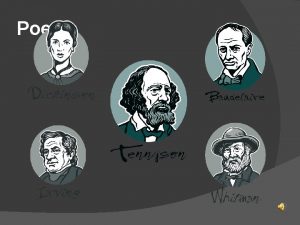Poetry A kind of rhythmic compressed language that











- Slides: 11

Poetry • A kind of rhythmic, compressed language that uses figures of speech and imagery designed to appeal to our emotions and imaginations.

Rhythm • A musical quality produced by the repetition of stressed and unstressed syllables or by the repetition of certain sound patterns.

Rhyme • The repetition of accented vowel sounds and all sounds following them - in words that are close together in a poem. • Example: cat and hat

Onomatopoeia • The use of a word whose sound imitates or suggests its meaning. • Example: Crash! Bonk! Screech!

Alliteration • The repetition of the same, or very similar, consonant sounds in words that are close together. • Example: Snakes slither silently down the sunny sidewalk.

Imagery • Language that appeals to the senses • Imagery “paints” pictures for your mind’s eye

Simile • A comparison between two unlike things using a word such as “like” or “as” • Example: She was as sweet as sugar. Her hair was like fine silk.

Metaphor • A comparison between two unlike things in which one thing becomes another thing. • Example: The sky diver is an exclamation point upside down.

Personification • A figure of speech in which an object or animal is given human feelings, thoughts, or attitudes. • Example: The eagle clasped the crag with crooked hands.

Reading Poetry • Read aloud when possible. • Be aware of punctuation, especially periods and commas. • Periods alert you to the ends of sentences which are not always at the end of the line. • If a line of poetry does not end with punctuation, do not make a full stop.

Poetry Booklet • Worth 250 pts. • Consists of: Cover page with illustration, name, date, and title (10 pts. ) • Table of contents with definitions (15 pts. ) • One of each type of poem: (150 pts. ) Haiku, Diamante, Cinquain, List, Limerick (each of these will have illustrations)
 A kind of rhythmic compressed language
A kind of rhythmic compressed language Ngoại tâm thu thất chùm đôi
Ngoại tâm thu thất chùm đôi Premature atrial contraction
Premature atrial contraction Thơ thất ngôn tứ tuyệt đường luật
Thơ thất ngôn tứ tuyệt đường luật Thơ thất ngôn tứ tuyệt đường luật
Thơ thất ngôn tứ tuyệt đường luật Chiến lược kinh doanh quốc tế của walmart
Chiến lược kinh doanh quốc tế của walmart Tìm vết của mặt phẳng
Tìm vết của mặt phẳng Con hãy đưa tay khi thấy người vấp ngã
Con hãy đưa tay khi thấy người vấp ngã Tôn thất thuyết là ai
Tôn thất thuyết là ai Gây tê cơ vuông thắt lưng
Gây tê cơ vuông thắt lưng Sau thất bại ở hồ điển triệt
Sau thất bại ở hồ điển triệt Ode sonnet
Ode sonnet











